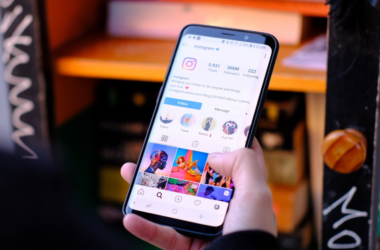- Tension: We rely on smartphones for convenience and connection, yet we’re increasingly uneasy about how much they might be listening—without our consent or awareness.
- Noise: Tech companies assure us that voice assistants only activate when prompted and that our data is secure, leading us to believe our privacy is intact.
- Direct Message: Your phone is more than a communication tool; it’s a sophisticated sensor suite that can monitor your environment in ways that often bypass traditional privacy safeguards.
This article follows the Direct Message methodology, designed to cut through the noise and reveal the deeper truths behind the stories we live.
Smartphones have a microphone, of course—but that mic isn’t the only way the device at your hip can soak up what’s happening around you.
Below are nine under-the-radar methods phones (and the software that runs on them) use to “listen” in—sometimes literally, sometimes through clever side-channels. Most of these practices sit deep in privacy-policy footnotes or white-paper PDFs, so the average user never notices.
1. The always-on wake-word buffer
Every modern phone ships with a low-power chip that does nothing all day except monitor sound for a wake phrase like “Hey Siri” or “OK Google.” The manufacturers swear these few-second audio loops stay local, yet the hardware is still continuously sampling everything you say so it can spot the trigger instantly.
Why it matters:
Because the mic never truly sleeps, anything that sounds like the wake word—kids yelling “seriously!” or the TV muttering “okay”—can jolt the phone into a higher-power state where it records and processes what comes next (see #2). Even if the clip is discarded a second later, the acoustic window was open.
2. False activations funnel chatter to the cloud
Those same always-on chips misfire more often than you’d guess. Google admits Assistant can be triggered by “noise that sounds like ‘Hey Google,’” sending unexpected voice clips to its servers; Apple’s 2019 Siri scandal revealed that accidental activations captured everything from bedroom talk to medical info.
Why it matters:
When a false wake occurs, the device captures several seconds before and after the phrase so the cloud can “understand the request.” The recording often includes unrelated private conversation.
3. Outsourced “quality assurance” teams review those clips
It isn’t just algorithms parsing your speech. Leaks in 2019 showed that contracted human graders were paid to listen to snippets flagged as hard for the AI, judging transcription accuracy and background context. Apple just settled a $95 million class-action suit over the practice but still denies wrongdoing.
Why it matters:
Although companies claim the audio is anonymized, graders reported seeing contact names, app data, and location alongside the files. Humans—not just machines—might hear your supposedly private moments.
4. Ultrasonic beacons your ears can’t hear
A growing number of apps quietly listen for 18–20 kHz ultrasonic chirps embedded in TV ads, YouTube videos, or even store PA systems.
When your phone “hears” the code, it confirms you were in front of that screen or inside that shop—perfect intel for cross-device ad targeting. Researchers found 234 Android apps using the trick, and ad network Silverpush was forced to back away after an FTC warning.
Why it matters:
You never see a permission prompt saying “Allow ultrasonic tracking?”—just the benign-sounding “Allow microphone access.” The beacon itself is inaudible, so you can’t tell it’s happening.
5. Advertising SDKs that piggy-back on mic permissions
Even if an app doesn’t advertise voice features, embedded third-party SDKs can harvest ambient audio in the background to figure out what song is playing, whether kids are present, or which streaming service is on. Developers sometimes don’t realize the full scope of the data the SDK is gathering—until regulators step in (as with Silverpush).
Why it matters:
You may trust the main app, but you have zero visibility into what its bundled ad library keeps from its “audio analytics.”
6. The gyroscope that moonlights as a microphone
In 2014, Stanford researchers showed that MEMS gyroscopes—no permission required on Android—can pick up air-pressure vibrations from human speech and reconstruct keywords. Dubbed “Gyrophone,” the attack lets a simple game or flashlight app eavesdrop without ever touching the mic.
Why it matters:
Because motion sensors are considered “low-risk,” mobile OSes staple them wide open. A malicious app can collect raw gyro data, run it through machine-learning filters, and extract spoken phrases while sailing past your privacy settings.
7. Accelerometer vibrations as a speech side-channel
Follow-up work has shown that even accelerometers—chips designed to detect shaking—register subtle case vibrations when you talk. A 2020 study demonstrated that an app could identify speaker gender and extract word-level information via this route, again with no special permission.
Why it matters:
Sensor fusion makes these attacks better every year. Combine gyro + accelerometer + barometer and you have a coarse but improving wiretap without the red flag of “microphone access” in the permissions list.
8. Accessibility sound-recognition that never turns off
Apple’s Sound Recognition feature (iOS 14+) constantly monitors for doorbells, babies crying, smoke alarms, and dozens of other noises—useful for the hard-of-hearing. While Apple says analysis happens on-device, the detections are logged and can trigger notifications across your iCloud-linked hardware. That’s a running ledger of what sounds fill your home.
Why it matters:
Helpful accessibility tools can double as environmental surveillance, quietly cataloging when you cook (timer beeps), when you come home (door knock), or when your dog barks.
9. “Nearby” ultrasound tokens that reveal physical presence
Google’s deprecated Nearby Messages API used inaudible chirps to let phones discover each other in the same room. When your handset detects a token over near-ultrasound, it pings Google servers to see who else is nearby and what messages to pull. Even though the feature is winding down, the underlying principle—broadcasting and listening over ultrasonic audio for proximity—remains alive in newer frameworks.
Why it matters:
Those tokens can effectively map who you were physically close to, when, and for how long—prime data for advertisers or, in theory, law-enforcement subpoenas.
So…is your phone really spying?
“Listening” doesn’t always mean your handset is live-streaming your conversations to a marketing bunker. Many of the acoustic tricks above serve legitimate functions (voice control, accessibility, contact-less pairing). The problem is opacity: we rarely get a clear opt-in moment, and the boundary between “feature” and “surveillance” blurs at the edges.
How to limit the eavesdropping
-
Audit mic permissions regularly and revoke any that seem unnecessary.
-
Disable voice assistants you don’t use—or at least switch off “Improve Siri/Assistant” options that share audio samples.
-
Turn off ultrasound tracking where possible (Android Settings > Google > “Nearby” or “Device connections”).
-
Use sensor-blocking toggles on custom Android ROMs or third-party privacy apps to throttle gyroscope/accelerometer access.
-
Keep software updated, since patches often close or restrict side-channel exploits.
Bottom line
The phone in your pocket is an acoustic Swiss-army knife—and marketers, app developers, and even security researchers constantly find fresh ways to flip open another blade. Until privacy law and OS design catch up, the safest assumption is that if your mic (or any motion sensor) is powered, someone can coax useful data out of it. Awareness is your first defense; the toggles in Settings are your second. Everything else is just hoping the companies live up to the promises they still don’t like to talk about.






